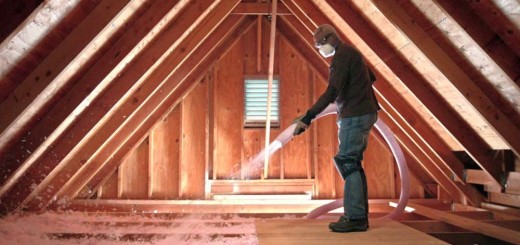Cellulose Insulation – Costs And Advantages
Insulating a home is now an integral part of a building process. Methods are diverse, evolving in time from the banal polystyrene sheet to modern green technologies, way more efficient and which ensure a higher comfort, regardless of the type of home and the climate where it stands. We will today take a close look at cellulose insulation, a modern, ecological and performant thermal and phonic insulation, listing all the advantages that come with it and costs alike.
Cellulose is among the oldest types of building insulation material. Many types of cellulosic materials have been used, including newspaper, cardboard, cotton, straw, sawdust, hemp and corncob. Modern cellulose insulation, made with recycled newspaper using grinding and dust removing machines and adding a fire retardant, began in the 1950s and came into general use in the US during the 1970s. Cellulose insulation is often made by hammer milling waste newspaper. The newspaper is treated with chemicals, such as boric acid, to retard the spread of fire.
Important to highlight from the very beginning, cellulose fibers stand out as having exceptional thermal characteristics, such as a thermal transfer index lower than classic isolations made with mineral wool or polystyrene. Moreover, the cellulose isolation has a density of 30-35 kg/square meters which we only find at basalt fiber, way more expensive. Cellulose insulation is often blown into building spaces through hoses from special blowing equipment, often mounted on the transportation vehicle. Thanks to its physical properties, cellulose fiber covers all the spaces under the roof or inside the walls. Experts recommend a minimum 20 cm of cellulose layer so that the insulation is highly efficient.
Equally important, this type of insulation can be used for walls, floors, ceilings and roofs and, besides thermal properties, it also ensure a high degree of phonetic insulation. At the same time, cellulose also helps distribute moisture evenly across the insulated space, preventing its accumulation in a single area and thus facilitating a faster drying process. As concerns sound insulation, cellulose is more efficient than mineral wool. Just remember the egg cartons used to soundproof music studios, they were made of cellulose, too. For highly efficient sound proof insulations, cellulose needs to have a higher density, of 40 kg/square meters.
Finally, to give you a broad view of the advantages of suing this type of insulation, just imagine that in Finland, a Nordic country, almost 80 per cent of the homes are cellulose insulated. Heating savings can go up to 50 per cent while costs start at 8 Euros/square meter, depending on the thickness and density of the cellulose layer.
Sources: Arazu.ro, Romanialibera.ro, Rosamont.ro, Wikipedia.org


















